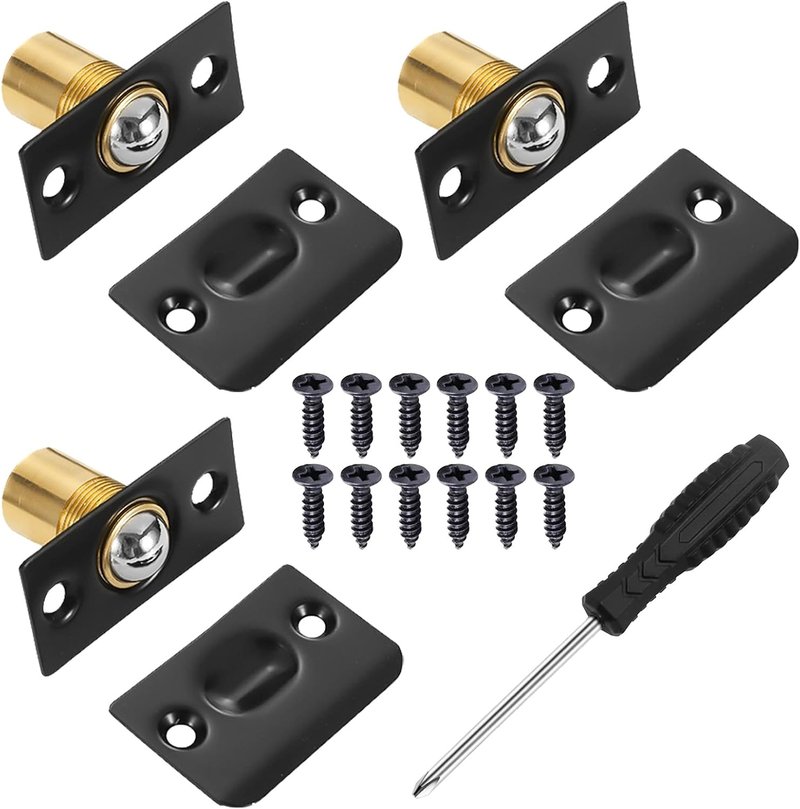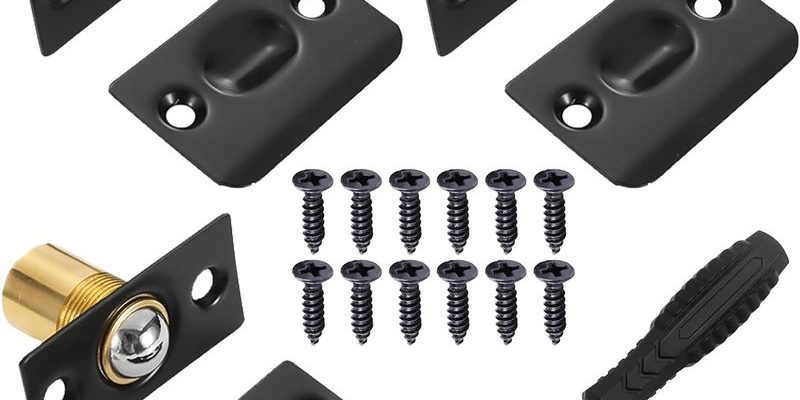
Ball catches and roller catches both work to keep closet doors securely closed. A ball catch comprises a spring-loaded ball that fits into a socket, ensuring the door stays in place. On the other hand, roller catches use a small roller to guide the door closed seamlessly. So, which one is right for your closet? Let’s dive deep into the details and discover the pros and cons of each.
What Are Ball Catches?
Ball catches are simple devices that feature a spring-loaded ball that fits into a socket. When you push the door closed, the ball snaps into place within the socket, keeping the door securely shut. It’s a user-friendly mechanism that doesn’t require much force to engage—think of it as a cuddly friend giving your closet door a soft nudge.
One of the best things about ball catches is their versatility. You can install them on various types of doors, from sliding to bi-fold. Unlike some more complex mechanisms, ball catches are often adjustable. This means you can fine-tune how tight the catch is, allowing for a customized fit.
However, ball catches aren’t without their downsides. Over time, the spring might wear out, resulting in a less secure hold. If you’re not careful, dirt and dust can build up in the catch, causing it to stop working smoothly. But for most, this is a minor inconvenience compared to the ease of use.
What Are Roller Catches?
Now let’s turn our attention to roller catches. These mechanical wonders use a roller that glides along a track as you slide the door shut. When the door reaches its designated spot, the roller locks into place. Picture a smooth roller coaster ride—no bumps, just a gentle glide into position.
Roller catches excel in providing a smooth operation. The rolling mechanism is less prone to sticking, which can be especially helpful if you have heavier doors. They’re great for creating a sleek, modern look since you often can’t see the catch when the door is closed.
Still, roller catches have some cons. If the roller becomes misaligned or dirty, it can cause the door to stick or not catch properly. Regular maintenance is essential to keep everything running smoothly, and you might find yourself needing to adjust the catch more frequently than you’d like.
Side-by-Side Comparison of Ball Catches and Roller Catches
To help you visualize the differences further, let’s break down a few key factors comparing ball catches and roller catches:
| Feature | Ball Catches | Roller Catches |
| Installation | Simple, adjustable | Requires precise alignment |
| Smoothness of Operation | Generally smooth, may stick | Very smooth, less sticking |
| Maintenance | Occasional spring replacements | Regular roller alignment |
| Aesthetic | Visible when door is closed | Concealed when door is closed |
This side-by-side comparison highlights the unique traits each option brings to the table. You might find that one appeals more to your needs and lifestyle than the other.
Which One Is Right For You?
You might be wondering how to decide between ball catches and roller catches. The answer depends on a few factors, including your specific needs and the type of doors you have. If you prefer something straightforward and adjustable, ball catches could be the way to go. They’re easy to install and work well with many types of closets.
On the flip side, if you value smooth operation and a cleaner aesthetic, roller catches might be your best bet. They’re perfect for modern spaces where appearance matters. Just keep in mind that you may need to keep an eye on alignment and maintenance to ensure they work like a charm.
Installation Tips for Ball Catches
If you’ve decided on ball catches, installing them is pretty straightforward. Here’s a simple process to guide you through:
1. Gather Your Tools: You’ll need a drill, screws, and a level.
2. Position the Catch: Determine where you want the catch mounted. It’s usually best to place it at about shoulder height.
3. Mark the Holes: Use a pencil to mark where you’ll drill the holes for the screws. Make sure it lines up with the socket on the door.
4. Drill and Secure: Drill your pilot holes, then secure the catch with screws. Use the level to ensure it’s straight.
Once that’s done, test the door to ensure it catches properly. If it feels loose, you might need to tighten the catch or adjust its position.
Installation Tips for Roller Catches
Installing roller catches requires a slightly different approach. Here’s how to get it right:
1. Gather Your Tools: Similar to ball catches, grab a drill and screws, but you may also want a measuring tape.
2. Align the Roller: Position the roller catch on the door frame where the door will meet it.
3. Mark and Drill Holes: Mark the holes for the screws on the frame and drill them.
4. Attach the Roller: Secure the roller catch in place, ensuring it’s aligned with the door.
After installation, test the door. It should glide effortlessly closed and catch without sticking. Adjust the roller position if needed, so it aligns perfectly.
Troubleshooting Common Issues
Even with the best setups, issues can pop up. Here’s how to tackle some common problems:
– Ball Catches Not Catching: Check if the spring is functional. If the ball seems stuck, cleaning the catch can often fix the issue.
– Roller Catches Sticking: Misalignment is usually the culprit here. Carefully adjust the roller position to see if that resolves the sticking issue.
Using these troubleshooting tips can save you from headaches down the road. With a little maintenance, both types of catches can serve you well for years.
Choosing between ball catches and roller catches for your closet doors doesn’t have to be a daunting task. By understanding the differences, benefits, and installation techniques, you can make an informed choice that best fits your needs.
Whether you opt for the simplicity of ball catches or the smoothness of roller catches, each option holds its own unique charm. The most important thing is to find what works best for your space and lifestyle. Once you make your choice, installation is easy, and you’ll soon enjoy the benefits of well-functioning closet doors.
